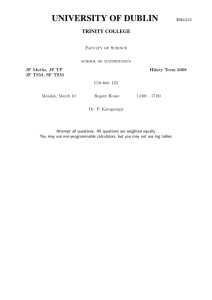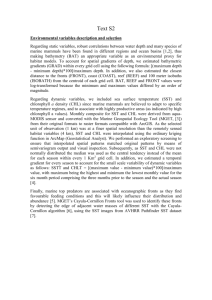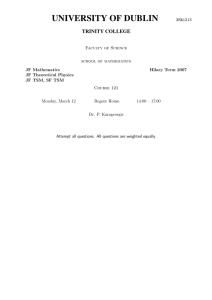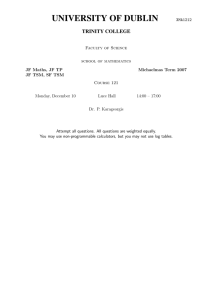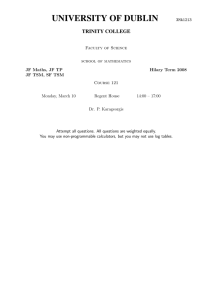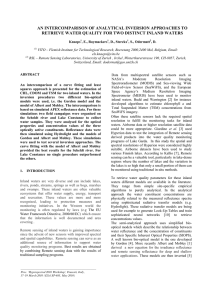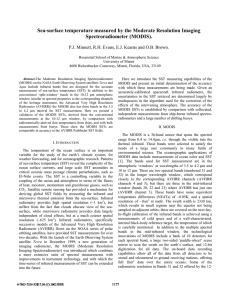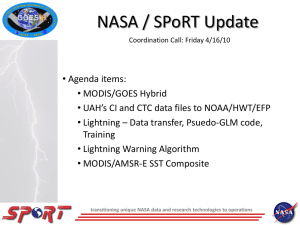CREATING A REGIONAL, MULTI-YEAR ARCHIVE OF SATELLITE-DERIVED
advertisement
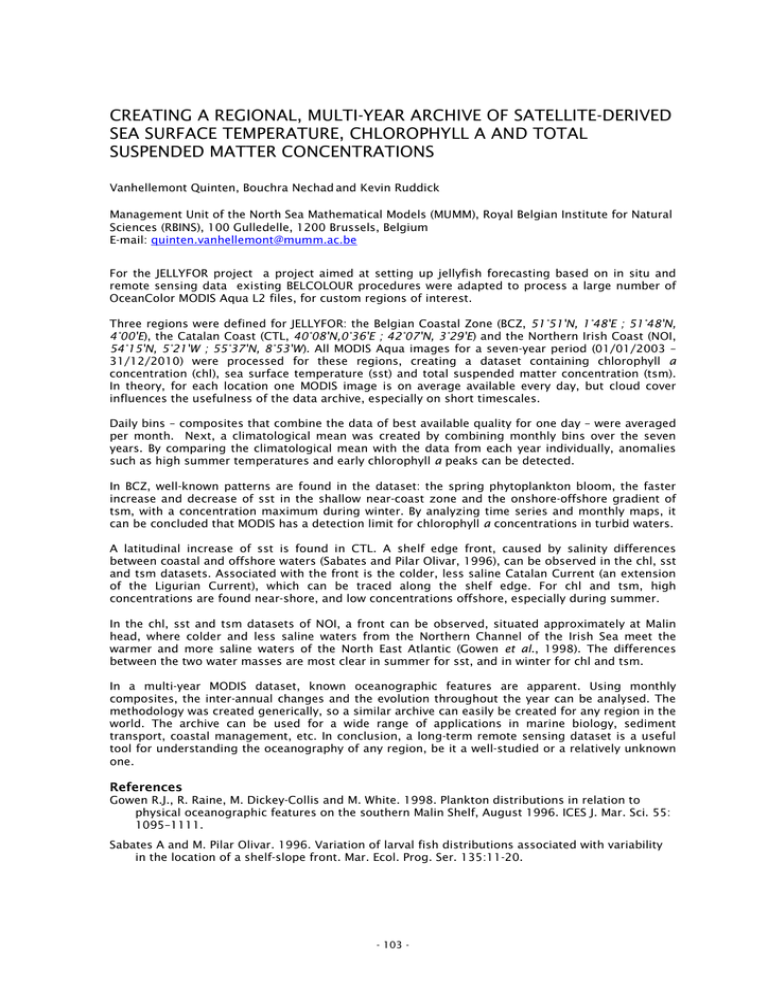
CREATING A REGIONAL, MULTI-YEAR ARCHIVE OF SATELLITE-DERIVED SEA SURFACE TEMPERATURE, CHLOROPHYLL A AND TOTAL SUSPENDED MATTER CONCENTRATIONS Vanhellemont Quinten, Bouchra Nechad and Kevin Ruddick Management Unit of the North Sea Mathematical Models (MUMM), Royal Belgian Institute for Natural Sciences (RBINS), 100 Gulledelle, 1200 Brussels, Belgium E-mail: quinten.vanhellemont@mumm.ac.be For the JELLYFOR project a project aimed at setting up jellyfish forecasting based on in situ and remote sensing data existing BELCOLOUR procedures were adapted to process a large number of OceanColor MODIS Aqua L2 files, for custom regions of interest. Three regions were defined for JELLYFOR: the Belgian Coastal Zone (BCZ, 51°51'N, 1°48'E ; 51°48'N, 4°00'E), the Catalan Coast (CTL, 40°08'N,0°36'E ; 42°07'N, 3°29'E) and the Northern Irish Coast (NOI, 54°15'N, 5°21'W ; 55°37'N, 8°53'W). All MODIS Aqua images for a seven-year period (01/01/2003 – 31/12/2010) were processed for these regions, creating a dataset containing chlorophyll a concentration (chl), sea surface temperature (sst) and total suspended matter concentration (tsm). In theory, for each location one MODIS image is on average available every day, but cloud cover influences the usefulness of the data archive, especially on short timescales. Daily bins – composites that combine the data of best available quality for one day – were averaged per month. Next, a climatological mean was created by combining monthly bins over the seven years. By comparing the climatological mean with the data from each year individually, anomalies such as high summer temperatures and early chlorophyll a peaks can be detected. In BCZ, well-known patterns are found in the dataset: the spring phytoplankton bloom, the faster increase and decrease of sst in the shallow near-coast zone and the onshore-offshore gradient of tsm, with a concentration maximum during winter. By analyzing time series and monthly maps, it can be concluded that MODIS has a detection limit for chlorophyll a concentrations in turbid waters. A latitudinal increase of sst is found in CTL. A shelf edge front, caused by salinity differences between coastal and offshore waters (Sabates and Pilar Olivar, 1996), can be observed in the chl, sst and tsm datasets. Associated with the front is the colder, less saline Catalan Current (an extension of the Ligurian Current), which can be traced along the shelf edge. For chl and tsm, high concentrations are found near-shore, and low concentrations offshore, especially during summer. In the chl, sst and tsm datasets of NOI, a front can be observed, situated approximately at Malin head, where colder and less saline waters from the Northern Channel of the Irish Sea meet the warmer and more saline waters of the North East Atlantic (Gowen et al., 1998). The differences between the two water masses are most clear in summer for sst, and in winter for chl and tsm. In a multi-year MODIS dataset, known oceanographic features are apparent. Using monthly composites, the inter-annual changes and the evolution throughout the year can be analysed. The methodology was created generically, so a similar archive can easily be created for any region in the world. The archive can be used for a wide range of applications in marine biology, sediment transport, coastal management, etc. In conclusion, a long-term remote sensing dataset is a useful tool for understanding the oceanography of any region, be it a well-studied or a relatively unknown one. References Gowen R.J., R. Raine, M. Dickey-Collis and M. White. 1998. Plankton distributions in relation to physical oceanographic features on the southern Malin Shelf, August 1996. ICES J. Mar. Sci. 55: 1095–1111. Sabates A and M. Pilar Olivar. 1996. Variation of larval fish distributions associated with variability in the location of a shelf-slope front. Mar. Ecol. Prog. Ser. 135:11-20. - 103 -

